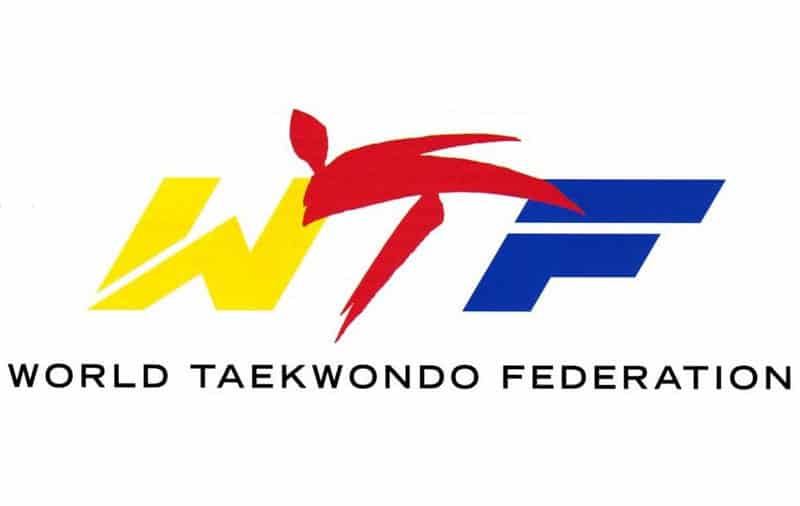
In Taekwondo, they have a wide variety of defensive blocks(Makgis) that are taught in curriculums. There is a block available for nearly every possible attack a person can use to defend themselves.
So, what are the blocks in TaeKwondo? All blocks in Taekwondo are essential to practice for both poomsae and One step Sparring. There are, however, some blocks that are used more often in TaeKwondo then others.
This isn’t all though. There is much more to how and why these blocks were incorporated into TaeKwondo. From the history to the practical use in self defense. Therefore, I put it all together for you to read.
What are the Basic Blocks in Taekwondo?
The two most basic blocks taught in Taekwondo are knife hand blocks and closed fist blocks. Both are designed to block specific attacks.
Knife Hand Blocks:
These blocks are designed to parry, catch, grab, and deflect attacks. When you use these blocks, your guards are up and you’re hands are open. Your fingers are all connected and your hands resemble knives.(Hence the name knife hands.) With this block you use the outer ridge of your hand to block attacks
Examples of Use: When someone throws a punch, you can have your knife hand guard up and deflect the punches away from your face. Also grabbing their wrist and counter attacking.
Closed Hand Blocks:
Unlike knife hands, your hands are closed when using these blocks. Sometimes your guards resemble guards in boxing when blocking attacks. Your hands are in a frame position and use your forearms to block strikes from an opponent.
Examples of Use: When some is throwing front kicks to your face or head you can deflect the attacks using these blocks.
Want To Know More About TaeKwondo Blocks?
If you want to know more Taekwondo blocks, then keep reading below. We will go over nearly every type of block in TaeKwondo with the Korean names and how to perform each one.
Below is a comprehensive list of blocks in TaeKwondo. Most of these are basic blocks, but a few are more high level techniques.
Outer Forearm Block(Bakat Palmok Makgi):
When performing this block your front arm snaps forward into a horizontal frame. It can either be performed high, middle, or low. Walking stance is a common stance that this block is performed in.
Low Block(Arae Makgi):
A low block is performed with your outside arm to protect against leg and lower body strikes. When opponent throws a strike like a kick, you bring the outside arm down to block it away. It is a snapping motion downward from shoulder height ending with the palm facing the ground. (This is the WTF name for the technique and the ITF name is a downward block. Also a different Korean name Naeryo Makgi.
High Block(Ulgool Makgi):
The high block was created to block high attacks like and axe kick or front kick to the face. One arm is pressed against your side, while the other arm comes upward with the palm facing outward. This is a beginner block that everyone in TaeKwondo learns in their first few lessons.
Outside Forearm Block(Bakat Palmok Makgi):
With this block you use the outside part of your forearm to block high, medium, and low attacks. Generally in TaeKwondo, you start in ready stance and move to walking stance to do this block. As you move to walk stance, you snap your arm forward blocking with the outer forearm.
Inner Forearm Block(An Makgi):
Your perform this block by stepping forward and making a chopping motion with your arm. They arm is vertical with your palm facing inward and the inside of your arm taking the blow of the attack.
Rising Block(Chookya Makgi):
This block is designed to protect you from strikes to the head and shoulders. You raise your arm horizontally over your head and the inside of the forearm absorbs the blow. It’s also a good self defense block if someone is attacking with a weapon.
Guarding Block(Daebi Makgi):
This is a group of blocks used in ITF style TaeKwondo. It is generally done in an L stance or rear foot stances. At the moment it is time to block bring your front hand forward to meet the strike, while the back arm is on the side of your chest. The guard hand should be able to protect most of your body.
Twisting Block:
During the motion of this block your torso twists in the direction of the block. This is done to give yourself the ability to grab your opponent after blocking. Knife hands are mixed together with a twisting block and make a technique called a knife hand twist block.
Scissors Block(Kawi Makgi or Gawi Makgi):
A scissors block is actually a mix of two different blocks simultaneously. An outer forearm block and a downward block. It’s called a scissors block, because you make the same scissoring motion across your chest to block different body parts at the same time.
Cross Block/X Block(Otgoreo Makgi):
Also called X fist block in ITF style TaeKwondo is a block where you cross your wrists in front of your body. The palms face outward and the arm on the same side as your lead leg is always on bottom. You can block high, medium, low attacks, and either use fists or knife hands.
Palm Block(Sonbadak Naeryo Makgi):
To perform a palm block, you place an open hand in front of your face to protect yourself from attacks. All of your fingers are connected and you use the heel of your hand to block. You must do a thrusting motion to meet the punch/kick before it reaches your face, because if not you will hit yourself in the face with your own hand.
Single Forearm Block(Wae Sun Palmok):
This block is generally used to block kicks thrown at your torso. Starting with your lead hand at the opposite shoulder, you move your arm downward in a swift motion to meet an opponent’s kick. Your forearm is the part of your arm blocking.
Twin Forearm Block:
Also referred to as a diamond block in WTF style this is simultaneous high block and middle height outward block. It starts with your arms crossed and chambered on your chest. The outside arm does the high block, while the inside arm does the middle outward block.
Double Knife Hand Block(Yangsonnal Momtang Magki):
This move is basically the same as an outside block, but used with knife hands. It is generally used in a back stance. There is also a double knife hand low block technique referred to as Sonnal Arae Makgi.
Double Forearm Block(Doo Palmok Makgi):
It is similar to a normal forearm block, but the back fist connects to your front arm. This is to provide extra support and immediately react if you need to block a secondary attack with your back arm.
Nine Block(Gutja Makgi):
The 9 block is an advanced blocking technique to block coordinated punch and kick combinations to the midsection. It is generally used in walking stance and gets its name, because your hands are in the shape of the number nine.
Push Kick(Mireo Chagi):
In TaeKwondo, you can use a push kick to block the attacks of a pressing opponent. A push kick is performed by bringing your knee to your chest and pushing your leg outward striking the opponent. It blocks an opponent’s attack and gives you space to counter.
Cut Kick:
A cut kick is similar to a push kick and also looks like a sidekick. It is used to block an opponent’s spinning attacks in a sparring match. When an opponent is in motion to throw a spinning attack, you counter it by throwing a cut kick to their hip/lower back knocking them off balanced. This also sets up a counter attack.
Mountain Block(Santul Makgi):
The Kukkiwon(WTF) has a description for the mountain block. The description says, “The mountain block a skill of blocking two simultaneous attacks aimed at the defender’s face with the inside edge of the wrist to the clockwise direction and with the outside edge of the wrist to the counterclockwise direction. This block is a skill of blocking both sides at the same time with one’s arms in the shape of a mountain.”
Single Mountain Block(Oesanteul Makgi):
In this stance, your back arm is in an L shape behind your head and the front hand is straight and chambered at your hip. To perform the block, you bring the high arm down to meet the attack similar to a downward block.
Blocking Techniques Of Different TaeKwondo Organizations

All of the world’s major TaeKwondo organizations have their own list of blocks they teach in their curriculums. They also have different names for each block as you read in the techniques above.
An example of this is ITF guarding blocks. In ITF school, they teach a series of guarding blocks, but in WTF style schools, there is blocks called guarding blocks.
The only similar block WTF has to this is knife hands that are also taught in similar forms in ITF. ATA schools also have their own list of blocks that are a mix of WTF and ITF techniques and also depend on the specific school.
How To Practice Blocks in TaeKwondo
To practice TaeKwondo blocks, you can either do it with a partner or on your own practicing different Poomsaes. If you have a partner, you can take turns going back and forth practicing specific blocks with your partner throwing attacks at less than half speed to perfect the block.
Alone, you can go through your Poomsaes in a mirror and see if you are performing the blocks correctly and putting your hands in the right places.
TaeKwondo has a library of block techniques, but after you looked through this article, you should have a better grasp of common blocks performed in the martial art. Also how to practice the blocks and the differences between organizations. I encourage you to keep learning about the great martial art of TaeKwondo and continue building your skills.

